|
|
|  DSH 168A DSH 168A
k& Q( H% e* |& G2 k3 ?3 r6 f& b4 V; {' r
| Resistance to corrosion of current-carrying parts
% J2 s1 W6 ^+ [1 d | -
5 j0 l" x" w. S | Generality( t' S% V" L0 Q6 n; D9 I* ~
|
3 b, u: s" W7 j: EQuestion:
) u& } o, h# l. P7 S: t6 @How to judge whether a current-carrying part is resistant to corrosion ?
1 A$ q; K- S9 c. E" L# p+ hDecision: `# I- y6 L+ `# l8 B4 |4 G
CEE Recommendation n. 9 “Corrosion of current-carrying parts” may be applied to judge whether a current-carrying part is resistant to corrosion .
9 y6 m# ^4 p0 w# _% S* E. yIt is quoted in CB Bulletin No. 41 (September 1981).
' k1 r' A# A' k$ y* F7 YIn the following, for convenience, is reported a part of it:7 n1 J# J) Q* i6 w
RECOMMENDED TEXT, SCREWS, CURRENT-CARRYING PARTS AND CONNECTIONS.) p" Y+ _ s. g3 y9 z
a) Current-carrying parts and parts of terminals shall be of a metal having, under the conditions occurring in the equipment, adequate mechanical strength and resistance to corrosion.
, r) C1 |- W" d" VCompliance is checked by inspection and, if necessary, by measurement and by chemical analysis.; ^' I( ^) s* {3 r% U
After all the tests of the relevant specification, the current-carrying parts and parts of terminals shall show no appreciable deformation.
$ |* }& c" A: @) P9 @! ZExamples of suitable metals, when used within the permissible temperature range and under normal conditions of chemical pollution, are:$ c+ I( S+ H0 k- S9 x" R* ]
- copper,
4 b* C9 [* n7 o: I: X h- an alloy containing at least 58% copper for parts that are worked cold or at least 50% copper for other parts,
k# L- |7 q" C- b: r( t5 m) v- stainless steel containing at least 13% chromium and not more than 0,09% carbon,7 o0 `& Y* a$ H8 @, N2 W
- steel provided with an electroplated coating of zinc according to ISO Publication 2081-1973, the coating having a thickness of at least:
6 [2 G1 l* u, m7 K) W! E5 f- h* 5 T ISO grade “1 mild” for ordinary equipment,' j! m6 h" `+ l8 E- [, O6 a0 Z4 U
* 12 T ISO grade “2 moderate” for jet-proof and splash-proof equipment,9 o, M& e( \9 [& n
* 25 T ISO grade “3 severe” for jet-proof and watertight equipment.
$ v; [. I" K* Y+ A2 y2 ~. P; I- steel provided with an electroplated coating of nickel plus chromium according to ISO Publication 1456-1974, the coating having a thickness at least equal to that specified for:
; C( C& }3 @+ \6 z3 F( @, E0 L* service condition no. 2 for ordinary equipment,
; m: K* e# H! O1 d' t6 R* service condition no. 3 for drip-proof and splash-proof equipment,
; N# K0 E) [1 d" I) g: m: q% y* service condition no. 4 for jet-proof and watertight equipment.
0 d' \" [9 M) x/ `: |1 a$ w- Aluminium and its alloys, provided special measures are taken for removing, where necessary, the oxide layer, for obtaining a sufficient and durable contact pressure and for ensuring that the point of connection withstands the corrosion test specified;; R% O* ]1 C2 X5 A" e, E
however, until a suitable corrosion test and an electrical performance test are available, aluminium and its alloys should preferably not be used for current-carrying parts and terminals within the equipment.
5 U$ l, {; W* O7 g; ~Zinc and other metals which are soft or liable to creep are not considered to be suitable for current-carrying parts and terminals .7 E1 h% g. B x* O' c }3 r
The thickness of the electroplated coatings on steel may be determined by the magnetic method described in ISO Publication 2178-1972, or by microscopical
" _# G# E& [6 m" [measurement described in ISO Publication 1463-1973.
; C! O+ E6 _" c; M! Nb) Under moist conditions, metals showing a great difference of electrochemical potential with respect to each other shall not be used in contact with each other .
( S8 i; M7 i% u d& }, lCompliance is checked by inspection.
5 w& j# d8 L7 D, U
3 t4 y4 j q# p& b5 e+ \7 a- m5 T* B! J8 e$ W3 Q
Y% z- S+ {2 h2 y, |0 `
" h+ P j: y) i" Z, P; L" ?
|
本帖子中包含更多资源
您需要 登录 才可以下载或查看,没有账号?注册安规
x
|



 窥视卡
窥视卡 雷达卡
雷达卡 发表于 2012-9-5 11:36
发表于 2012-9-5 11:36
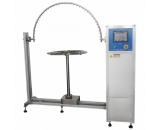

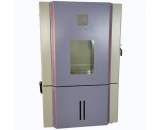

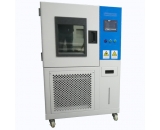

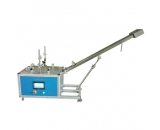

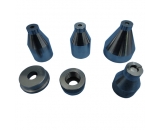






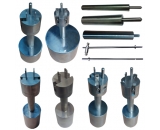
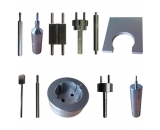
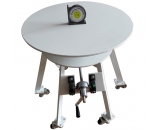
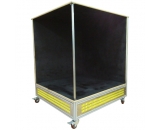

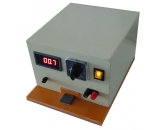
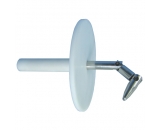
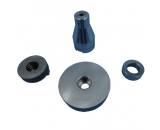
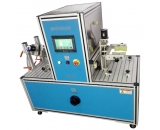
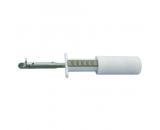
 提升卡
提升卡 置顶卡
置顶卡 沉默卡
沉默卡 喧嚣卡
喧嚣卡 变色卡
变色卡 抢沙发
抢沙发 千斤顶
千斤顶 显身卡
显身卡













